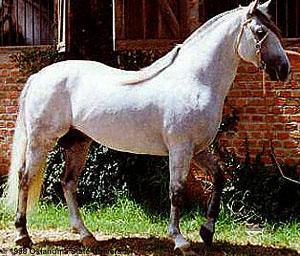Crioulo
"criollo" (in Spanish)
Mon, 14th July, 2025 - 8:25 pm GMT
Sponsor Ads:

Alternative Name
"criollo" (in Spanish)Basic Info
Usually dun with dorsal stripes, sometimes bay, chestnut and black. between 14 and 15hh. broad head, muscular neck and shoulders, deep body, strong legs and small feet.
Health
N/AHabitat
N/ABehavior
Today, the horse is used mainly as a working cow horse, but is also a pleasure and trail horse and has contributed a great deal to the Argentine polo pony (crioulo/Thoroughbred crosses make excellent polo ponies). They are also excellent rodeo and endurance horses. The national rodeo competition is known as "paleteada" and it involves a paired team of horses and riders that aproach a steer from both sides at a full run. The steer is sandwiched in between the two horses that lean into the bovine, practically carrying it down a 60 m long delineated path which the horses must not step out of during the defined trajectory. It is an amazing demonstration of control that can literally pick up a steer and place it wherever it needs to be. The Brazilian Breeder's Association, in the State of Rio Grande do Sul, where the breed is more developed, stablished a competition in order to reinforce the functional profile in the breed, called "Freio de Ouro" ("Gold Curb") for stallions and reproductive mares selected for their fenotipical features, that proves their hability for ranch work and sadlle horses. This iniciative has contributed enormously to development of functional features of the breed in that country. One example of the breed's fantastic endurance was the ride made by the Swiss rider Professor Aimé Félix Tschiffely (1894-1954) in 1925-28. Tschiffely took two crioulos, 16-year-old Mancha and 15-year-old Gato, on a 13,350 mile (21,500 km) trek from Buenos Aires to New York, crossing 5,000 m (16,400 ft) a.s.l. snow-capped mountains, the world's driest desert, the thickest tropical jungles and riding in all types of weather. Alternating the riding and packing between the two horses, the trio took three years to finish the trip. Although Prof. Tschiffely went through many hardships on the trip including a bout of malaria, the horses did wonderfully in the wide array of extreme topographies and climates. Gato lived to be 36, Mancha lived to be 40 living out the last years of their lives as celebrities in La estancia El Cardal (El Cardal Ranch), the breeding establishment of the man most credited for developing of the crioulo breed, Dr. Emilio Solanet.Origin
ArgentinaHistory
The breed dates back to a 1535 shipment of 100 Spanish stallions and mares to Rio de la Plata imported by Buenos Aires founder, Pedro de Mendoza. Athough it has always been claimed the crioulo has a lot of Barb influence they may also have Southern Peninsular horse, Sorraia, Garrano and Castilian genes.Common Foods
grassSponsor Ads:
Since few large pleasures are lent to us on a long lease, it is wise to cultivate a large undergrowth of small pleasures. -- Unknown
Crioulo
Coded by: BGID® | ALL RIGHTS RESERVED Copyright © 2000-2025
Disclaimer | Privacy | Report Errors / Contact | Credits
















